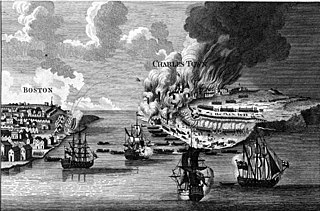Ten ships of the Royal Navy have carried the name HMS Spitfire, while an eleventh was planned but renamed before entering service. All are named after the euphemistic translation of Cacafuego, a Spanish treasure galleon captured by Sir Francis Drake.
Twelve ships of the Royal Navy have been named HMS Active or HMS Actif:

HMS Lively was a 20-gun post ship of the Royal Navy, launched in 1756. During the Seven Years' War she captured several vessels, most notably the French corvette Valeur in 1760. She then served during the American Revolutionary War, where she helped initiate the Battle of Bunker Hill. The French captured her in 1778, but the British recaptured her 1781. She was sold in 1784.
Six ships of the Royal Navy have borne the name HMS Folkestone or the archaic HMS Folkeston, after the town of Folkestone in Kent:
Sixteen ships of the Royal Navy have borne the name HMS Alert, while another was planned:
Nine ships of the Royal Navy have borne the name HMS Racehorse:
HMS Antigua has been the name of four ships of the Royal Navy, named after the Caribbean island of Antigua:
Fourteen ships and one shore establishment of the Royal Navy have borne the name HMS Merlin, after Merlin, the wizard in Arthurian legend :
HMS Hinchinbrook was the French privateer Astrée, which the British captured in 1778 and took into the Royal Navy as a 28-gun sixth-rate frigate. She was Captain Horatio Nelson's second navy command, after the brig HMS Badger, and his first as post-captain. She was wrecked, with no loss of life, in January 1783.

HMS Helena has been the name of several British Royal Navy ships, and may refer to:
Seventeen ships of the Royal Navy have borne the name HMS Dispatch, or the variant HMS Despatch:
Nine ships of the Royal Navy have been named HMS Zephyr after Zephyrus, the Greek god of the west wind:
Thirteen ships of the Royal Navy have borne the name HMS Bonetta:

HMS Racehorse was an 18-gun ship-rigged sloop of the Royal Navy, later refitted as a survey vessel. She was originally the 18-gun French privateer Marquis de Vaudreuil, captured from the French in 1757 during the Seven Years' War, and purchased for the British Navy on 28 April 1757. As she was a three-masted vessel, she was described as a 'frigate', but as she mounted just 18 guns, she was actually registered as a sloop.
Comte de Maurepas was a common name for French vessels in the 18th century. The name comes from that of the French statesman Jean-Frédéric Phélypeaux, Count of Maurepas.
HMS Port Royal was the former French armed merchant vessel Comte de Maurepas, which the British captured in 1778. The British armed her with 18 guns and took her into the Royal Navy under her new name. The Spanish captured her at the Siege of Pensacola in 1781.
Bunker Hill was a Massachusetts privateer sloop, first commissioned in 1778. She made two cruises, capturing three prizes, but during her second cruise the Royal Navy captured her at Saint Lucia. The Royal Navy took her into service as HMS Surprize. She served in the Caribbean, and was one of the two sloops that captured Essequibo and Demerara in March 1781. She sailed to Britain in late 1782 where the Navy sold her in 1783. The French Navy may have purchased her. If so, they sold her in 1789.

HMS Barbuda was commissioned into the Royal Navy in 1780 after having briefly served as an American privateer. Barbuda was one of the two sloops that captured Demerara and Essequibo in 1781, but the French Navy captured her there in 1782 and took her into service as Barboude. The French Navy sold her to private owners in 1786, and she served briefly as a privateer in early 1793 before the French Navy purchased her again and named her Légère. She served them until mid-1796 when the Royal Navy captured her and took her into service as HMS Legere. She was wrecked off the coast of Colombia, without loss of life, in February 1801.

HMS Ceres was an 18-gun sloop launched in 1777 for the British Royal Navy that the French captured in December 1778 off Saint Lucia. The French Navy took her into service as Cérès. The British recaptured her in 1782 and renamed her HMS Raven, only to have the French recapture her again early in 1783. The French returned her name to Cérès, and she then served in the French Navy until sold at Brest in 1791.
The French brig Duc de Chartres was built between 1779 and 1780 at Le Havre as a 24-gun privateer. As a privateer she captured one British warship before in 1781 the Royal Navy captured her. The Royal Navy took her into service as HMS Duc de Chartres. She then captured several American privateers and armed merchant vessels, and one French naval corvette in a noteworthy single-ship action. The Navy sold Duc de Chartres in 1784.
This page is based on this
Wikipedia article Text is available under the
CC BY-SA 4.0 license; additional terms may apply.
Images, videos and audio are available under their respective licenses.




